The Milky Way is a barred spiral galaxy, maybe even a grand design spiral galaxy. We can’t be sure from our vantage point. But one thing is certain: there aren’t many disk galaxies like it in our part of the Universe called the supergalactic plane.
Continue reading “There Aren’t Many Galaxies Like The Milky Way Nearby. Now We Know Why”We Might Be Able to Measure Dark Energy Through the Milky Way's Collision With Andromeda

The Universe is expanding, and it’s doing so at an ever-increasing pace. Whether due to a dark energy field throughout the cosmos or due to a fundamental of spacetime itself, the cosmos is stretching the space between distant galaxies. But nearby galaxies, those part of our local group, are moving closer together. And how they are falling toward each other could tell us about the nature of cosmic expansion.
Continue reading “We Might Be Able to Measure Dark Energy Through the Milky Way's Collision With Andromeda”Hubble Sees an Epic Merger of Three Galaxies
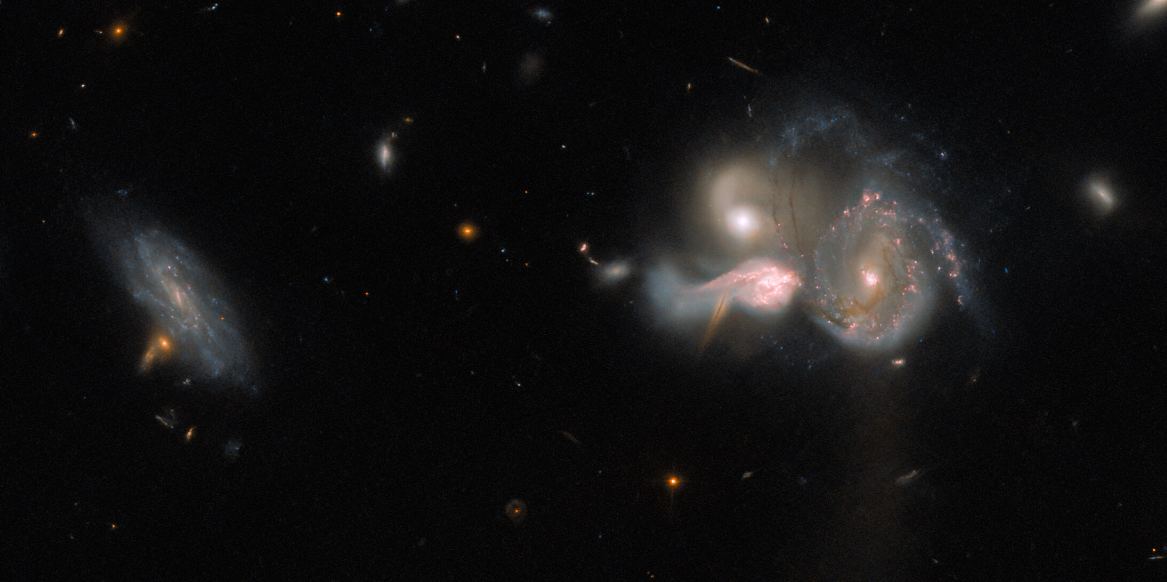
When is 50,000 light-years only a small distance? When three galaxies are that close to one another. At that range, they’re fiercely interacting.
In the case of the three galaxies referred to as SDSSCGB 10189, they’re 50,000 light-years apart and growing closer as they merge into a single massive galaxy.
Continue reading “Hubble Sees an Epic Merger of Three Galaxies”Meet Our Neighbour, The Local Void. Gaze Into It, Puny Humans.
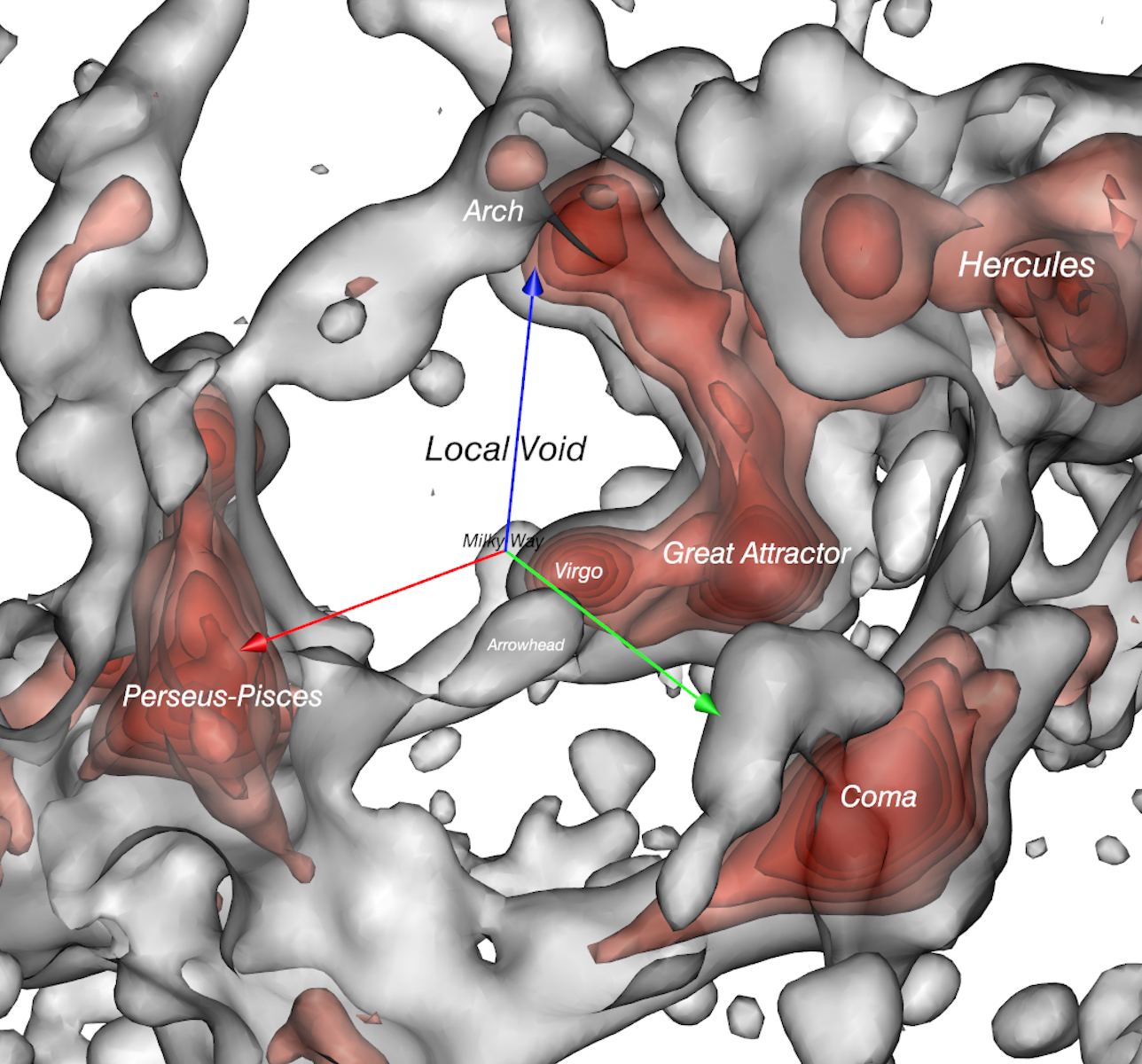
Our planet is part of the larger structure of the Solar System, shaped and made stable by the force of gravity. Our Solar System is gravitationally bound to the Milky Way galaxy, along with hundreds of millions of other solar systems. And our galaxy is also part of a larger structure, where not only gravity, but the expansion of the Universe, shapes and molds that structure. For regular Universe Today readers, none of that is news.
Now a new study sheds some light on a curious part of our cosmic neighbourhood, where there is basically nothing: The Local Void.
Continue reading “Meet Our Neighbour, The Local Void. Gaze Into It, Puny Humans.”Check out this Amazing Picture of the Triangulum Galaxy by Hubble.

To the unaided eye, the Triangulum Galaxy is just a smudge in the night sky. But it’s a smudge that contains about 40 billion stars. It also contains some very active star-forming regions, which have attracted the eyes of astronomers.
The Triangulum has a couple other names: Messier 33 and NGC 598. But Triangulum is the easier name to remember. (It’s also sometimes called the “Pinwheel Galaxy.”) But whatever name you choose to call it, this Hubble image brings it to life.
Continue reading “Check out this Amazing Picture of the Triangulum Galaxy by Hubble.”What are Magellanic Clouds?
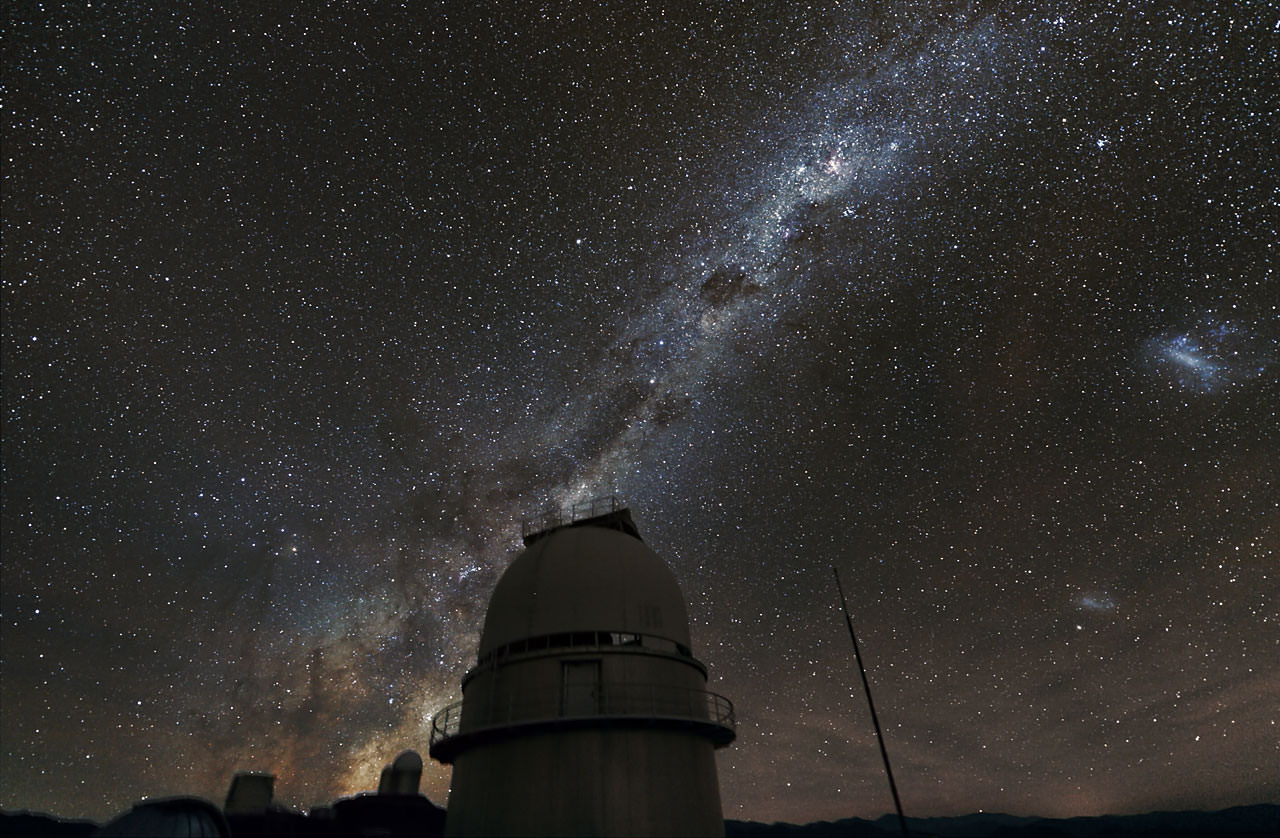
Since ancient times, human beings have been staring at the night sky and been amazed by the celestial objects looking back at them. Whereas these objects were once thought to be divine in nature, and later mistaken for comets or other astrological phenomena, ongoing observation and improvements in instrumentation have led to these objects being identified for what they are.
For example, there are the Small and Large Magellanic Clouds, two large clouds of stars and gas that can be seen with the naked eye in the southern hemisphere. Located at a distance of 200,000 and 160,000 light years from the Milky Way Galaxy (respectively), the true nature of these objects has only been understand for about a century. And yet, these objects still have some mysteries that have yet to be solved.
Characteristics:
The Large Magellanic Cloud (LMC) and the neighboring the Small Magellanic Cloud (SMC) are starry regions that orbit our galaxy, and look conspicuously like detached pieces of the Milky Way. Though they are separated by 21 degrees in the night sky – about 42 times the width of the full moon – their true distance is about 75,000 light-years from each other.

The Large Magellanic Cloud is located about 160,000 light-years from the Milky Way, in the constellation Dorado. This makes it the 3rd closest galaxy to us, behind the Sagittarius Dwarf and Canis Major Dwarf galaxies. Meanwhile, the Small Magellanic Cloud is located in the constellation of Tucana, about 200,000 light-years away.
The LMC is roughly twice the diameter of the SMC, measuring some 14,000 light-years across vs. 7,000 light years (compared to 100,000 light years for the Milky Way). This makes it the 4th largest galaxy in our Local Group of galaxies, after the Milky Way, Andromeda and the Triangulum Galaxy. The LMC is about 10 billion times as massive as our Sun (about a tenth the mass of the Milky Way), while the SMC is equivalent to about 7 billion Solar Masses.
In terms of structure, astronomers have classified the LMC as an irregular type galaxy, but it does have a very prominent bar in its center. Ergo, it’s possible that it was a barred spiral before its gravitational interactions with the Milky Way. The SMC also contains a central bar structure and it is speculated that it too was once a barred spiral galaxy that was disrupted by the Milky Way to become somewhat irregular.
Aside from their different structure and lower mass, they differ from our galaxy in two major ways. First, they are gas-rich – meaning that a higher fraction of their mass is hydrogen and helium – and they have poor metallicity, (meaning their stars are less metal-rich than the Milky Way’s). Both possess nebulae and young stellar populations, but are made up of stars that range from very young to the very old.

In fact, this abundance in gas is what ensures that the Magellanic Clouds are able to create new stars, with some being only a few hundred million years in age. This is especially true of the LMC, which produces new stars in large quantities. A good example of this is it’s glowing-red Tarantula Nebula, a gigantic star-forming region that lies 160,000 light-years from Earth.
Astronomers estimate that the Magellanic Clouds were formed approximately 13 billion years ago, around the same time as the Milky Way Galaxy. It has also been believed for some time that the Magellanic Clouds have been orbiting the Milky Way at close to their current distances. However, observational and theoretical evidence suggests that the clouds have been greatly distorted by tidal interactions with the Milky Way as they travel close to it.
This indicates that they are not likely to have frequently got as close to the Milky Way as they are now. For instance, measurements conducted with the Hubble Space Telescope in 2006 suggested that the Magellanic Clouds may be moving too fast to be long terms companions of the Milky Way. In fact, their eccentric orbits around the Milky Way would seem to indicate that they came close to our galaxy only once since the universe began.

This was followed in 2010 by a study that indicated that the Magellanic Clouds may be passing clouds that were likely expelled from the Andromeda Galaxy in the past. The interactions between the Magellanic Clouds and the Milky Way is evidenced by their structure and the streams of neutral hydrogen that connects them. Their gravity has affected the Milky Way as well, distorting the outer parts of the galactic disk.
History of Observation:
In the southern hemisphere, the Magellanic clouds were a part of the lore and mythology of the native inhabitants, including the Australian Aborigines, the Maori of New Zealand, and the Polynesian people of the South Pacific. For the latter, they served as important navigational markers, while the Maori used them as predictors of the winds.
While the study Magellanic Clouds dates back to the 1st millennium BCE, the earliest surviving record comes from the 10th century Persian astronomer Al Sufi. In his 964 treatise, Book of Fixed Stars, he called the LMC al-Bakr (“the Sheep”) “of the southern Arabs”. He also noted that the Cloud is not visible from northern Arabia or Baghdad, but could be seen at the southernmost tip of Arabian Peninsula.
By the late 15th century, Europeans are believed to have become acquainted with the Magellanic Clouds thanks to exploration and trade missions that took them south of the equator. For instance, Portuguese and Dutch sailors came to know them as the Cape Clouds, since they could only be viewed when sailing around Cape Horn (South America) and the Cape of Good Hope (South Africa).

During the circumnavigation of the Earth by Ferdinand Magellan (1519–22), the Magellanic Clouds were described by Venetian Antonio Pigafetta (Magellan’s chronicler) as dim clusters of stars. In 1603, German celestial cartographer Johann Bayer published his celestial atlas Uranometria, where he named the smaller cloud “Nebecula Minor” (Latin for “Little Cloud”).
Between 1834 and 1838, English astronomer John Herschel conducted surveys of the southern skies from the Royal Observatory at the Cape of Good Hope. While observing the SMC, he described it as a cloudy mass of light with an oval shape and a bright center, and catalogued a concentration of 37 nebulae and clusters within it.
In 1891, the Harvard College Observatory opened an observing station in southern Peru. From 1893-1906, astronomers used the observatory’s 61 cm (24 inch) telescope to survey and photograph the LMC and SMC. One such astronomers was Henriette Swan Leavitt, who used the observatory to discover Cephied Variable stars in the SMC.
Her findings were published in 1908 a study titled “1777 variables in the Magellanic Clouds“, in which she showed the relationship between these star’s variability period and luminosity – which became a very reliable means of determining distance. This allowed the SMCs distance to be determined, and became the standard method of measuring the distance to other galaxies in the coming decades.

As noted already, in 2006, measurements made suing the Hubble Space Telescope were announced that suggested the Large and Small Magellanic Clouds may be moving too fast to be orbiting the Milky Way. This has given rise to the theory that they originated in another galaxy, most likely Andromeda, and were kicked out during a galactic merger.
Given their composition, these clouds – especially the LMC – will continue making new stars for some time to come. And eventually, millions of years from now, these clouds may merge with our own Milky Way Galaxy. Or, they could keep orbiting us, passing close enough to suck up hydrogen and keep their star-forming process going.
But in a few billion years, when the Andromeda Galaxy collides with our own, they may find themselves having no choice but to merge with the giant galaxy that results. One might say Andromeda regrets spitting them out, and is coming to collect them!
We have written many articles about the Magellanic Clouds for Universe Today. Here’s What is the Small Magellanic Cloud?, What is the Large Magellanic Cloud?, Stolen: Magellanic Clouds – Return to Andromeda, The Magellanic Clouds are Here for the First Time.
If you’d like more info on galaxies, check out Hubblesite’s News Releases on Galaxies, and here’s NASA’s Science Page on Galaxies.
We have also recorded an episode of Astronomy Cast about galaxies – Episode 97: Galaxies.
Sources:
What Are Cosmic Voids?
Clearly I need to learn to be more specific when I write these articles. Everything time I open my mouth, I need to prepare for the collective imagination of the viewers.
We did a whole article about the biggest things in the Universe, and identified superclusters of galaxies as the best candidate. Well, the part of superclusters actually gravitationally bound enough to eventually merge together in the future. But you had other ideas, including dark energy, or the Universe itself as the biggest thing. Even love? Aww.
One intriguing suggestion, though, is the idea of the vast cosmic voids between galaxies. Hmm, is the absence of something a thing? Whoa, time to go to art school and talk about negative space.
Ah well, who cares? It’s a super interesting topic, so let’s go ahead and talk about voids.
When most people imagine the expansion of the Universe after the Big Bang, they probably envision an equally spaced smattering of galaxies zipping away from one another. And that’s pretty accurate at the smallest scales.
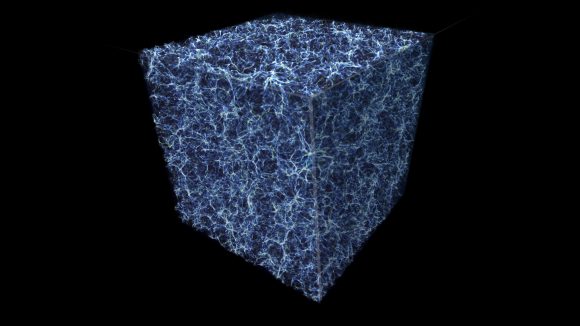
But at the largest scales, like when you can see billions of light-years in a cube that fits on your computer screen, then a larger structure starts to take shape.
It looks less like an explosion, and more like a tasty tasty sponge cake, with huge filaments, walls, and the vast gaps in between. The gaps, the voids, the supervoids, are the point of today’s article, but to understand the gaps, we’ve got to understand why the Universe is clumped up the way it is.
Run the Universe clock backwards, all the way to the beginning, to a fraction of a second after the Big Bang. When the entire cosmos was compressed down into a tiny region of superheated plasma.
Although it was mostly uniform in density, there were slight variations – quantum fluctuations in spacetime itself. And as the Universe expanded, those differences were magnified. What started out as tiny differences in the density of matter at the smallest scale, turned into regions of higher and lower density of matter in the Universe.
Here we are, 13.8 billion years after the Big Bang, and we can see how the microscopic variations at the beginning of time were magnified to the largest scales. Instead of individual galaxies, we see huge walls containing thousands of galaxies; filaments of galaxies connect in nodes. These structures are huge; hundreds of millions of light-years across, containing thousands of galaxies. But the gaps, the voids, between these clusters can be even larger.
Astronomers first started thinking about these voids back in the 1970s, when the first large-scale surveys of the Universe were made. By measuring the redshift of galaxies, and determining how fast they were speeding away from us, astronomers started to realize that the distribution of galaxies wasn’t even.
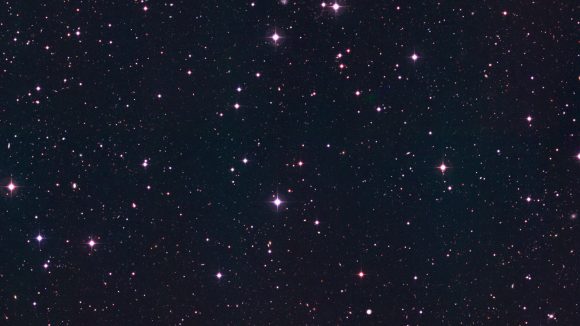
Some galaxies were relatively close, but then there were huge gaps in distance, and then another cluster of galaxies collected together.
Over the last few decades, astronomers have built sophisticated 3-dimensional models that map out the Universe in the largest scales. The Sloan Digital Sky Survey, updated in 2009, has provided the most accurate map so far. The Large Synoptic Survey Telescope, destined for first light in a few years will take this to the next level.
The largest void that we currently know of is known as the Giant Void (original, I know), and it’s located about 1.5 billion light-year away. It has a diameter of 1 billion to 1.3 billion light-years across.
To be fair, these regions aren’t really completely empty. They just have less density than the regions with galaxies. In general, they’ve got about a tenth the density of matter that’s average for the Universe.
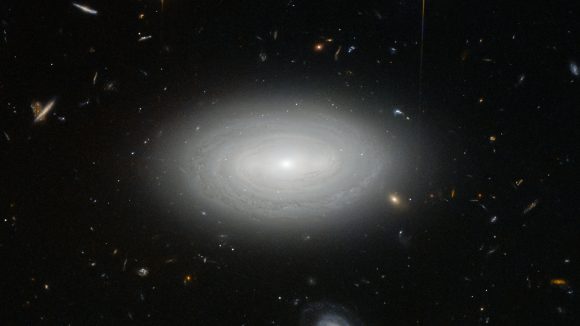
Credit: ESA/Hubble & NASA and N. Gorin (STScI). Acknowledgement: Judy Schmidt
Which means that there’s still gas and dust in these regions, as well as dark matter. There will still be stars and galaxies out in the middle of those voids. Even the Giant Void has 17 separate galaxy clusters inside it.
You might imagine continuing to scale outward. Maybe you’re wondering if the this spongy distribution of matter is actually just the next step to an even larger structure, and so on, and so on. But it isn’t. In fact, astronomers call this “the End of Greatness”, because it doesn’t seem like there’s any larger structure to the Universe.
As the expansion of the Universe continues, these voids are going to get even larger. The walls and filaments connecting clusters of galaxies will stretch and break. The voids will merge with each other, and only gravitationally bound galaxy clusters will remain as islands, adrift in the expanding emptiness.
The full scale of the observable Universe is truly mind boggling. We’re here in this tiny corner of the Local Group, which is part of the Virgo Supercluster, which is perched on the precipice of vast cosmic voids. So much to explore, so let’s get to work.
What Is The Biggest Thing in The Universe?
Think big. Really big. Like, cosmic big. How big can things in the Universe get? Is a galaxy big? What about a supercluster? What is the biggest thing in the Universe?
Our observable Universe is a sphere 96 billion light-years across, and the entire Universe might be infinite in size. Which is a hoarders dream walk-in closet space stuffed full of “things”. It’s loaded down with so much stuff, we’ve even given up naming things individually and now just spew out a list of letters and numbers to try and keep track of it all.
So, as is traditional, in a fit of adolescent OCD and one-upmanship reserved generally for things like tanks, planes and guns, we’re drawn to the question… What’s the biggest thing in the Universe. Well, 14 year old Fraser Cain, put down your copy of “Weapons and Warfare Volume 3” which you picked up at the dollar store as part of an incomplete set, as this is going to get a little tricky.
It all depends on what you mean by a “thing”. The biggest physical object is probably a star. The largest possible red giant star could be as big as 2,100 times the size our Sun. Placed inside our own Solar System, a monster star like this would extend out past the orbit of Saturn. That’s big, but we might be able to get even bigger if we’re willing to get past the idea that a “thing” has to be a homogeneous physical object.
Consider the regions around supermassive black holes. Within our own galaxy, things are pretty quiet, but around actively feeding black holes, there can be disks of material with such temperature and density that they act like the core of a star, fusing hydrogen into helium. Which, purely based on high volumetric density of pure awesome, I’m going to call a thing. An accretion disk around a quasar could be light days across, extending well past the orbit of Pluto and killing us all, if you dumped it in our Solar System.
If we’re going to be all philosophical about what constitutes a “thing” and you’re not all fussy about physical structure and just want a collection of material held together by gravity, then we can really can make some leaps and bounds in our “who’s got the biggest” measuring contest. Our own galaxy extends up to 120,000 light-years across.
There are much larger galaxies, ones that make the Milky Way look like that cat leash pendant from Men In Black 2. And ours is just one contained within a much larger cluster of galaxies known, rather unimaginatively, as the Local Group. Don’t let the centrist name fool you, this cluster contains around 50 galaxies and measures more than 10 million light-years across.
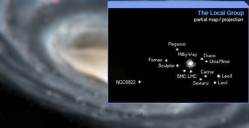
And we’re just getting started. The Local Group is one part of the Virgo Supercluster. A massive galactic structure that measures 110 million light-years apart. In 2014, astronomers announced that the Virgo Supercluster is just one lobe of an even larger structure, beautifully known as Laniakea, or “Immeasurable heaven” in Hawaiian. The name originated from Nawa’a Napoleon, an associate professor of Hawaiian Language at Kapiolani Community College. It honors the Polynesian sailors using “heavenly knowledge” navigating the Pacific Ocean, reminding us that romance is still alive and well in space and astronomy. Laniakea is centered around the Great Attractor – a mysterious source of gravity drawing galaxies towards it.
I almost forgot about our size contest. So who’s got the biggest space thing? According to buzzkill Ethan Siegel from the Starts With a Bang blog, you can’t actually have a structure that’s as big as Laniakea, and call it a thing. The fine-print reality is that the expansion of the Universe is being accelerated by dark energy. These galaxies are being pushed apart by dark energy faster than gravity can pull them together. So they’d never be able to form into a single object given enough time.
In other words, the largest possible object is a collection of galaxies at the exact size where gravity is just strong enough to overcome the expansive force of dark energy. Beyond that, everything’s getting spread apart, and it’s for our purposes we’re actually going to draw a line and say it’s not quite right to call it a thing. Unless you’d suggest a giant expanse of nothing is a thing… but let’s save that for another episode.
So what do you think? Do you feel like it’s right to call superclusters like Laniakea “a structure”?
10 Interesting Facts About the Milky Way
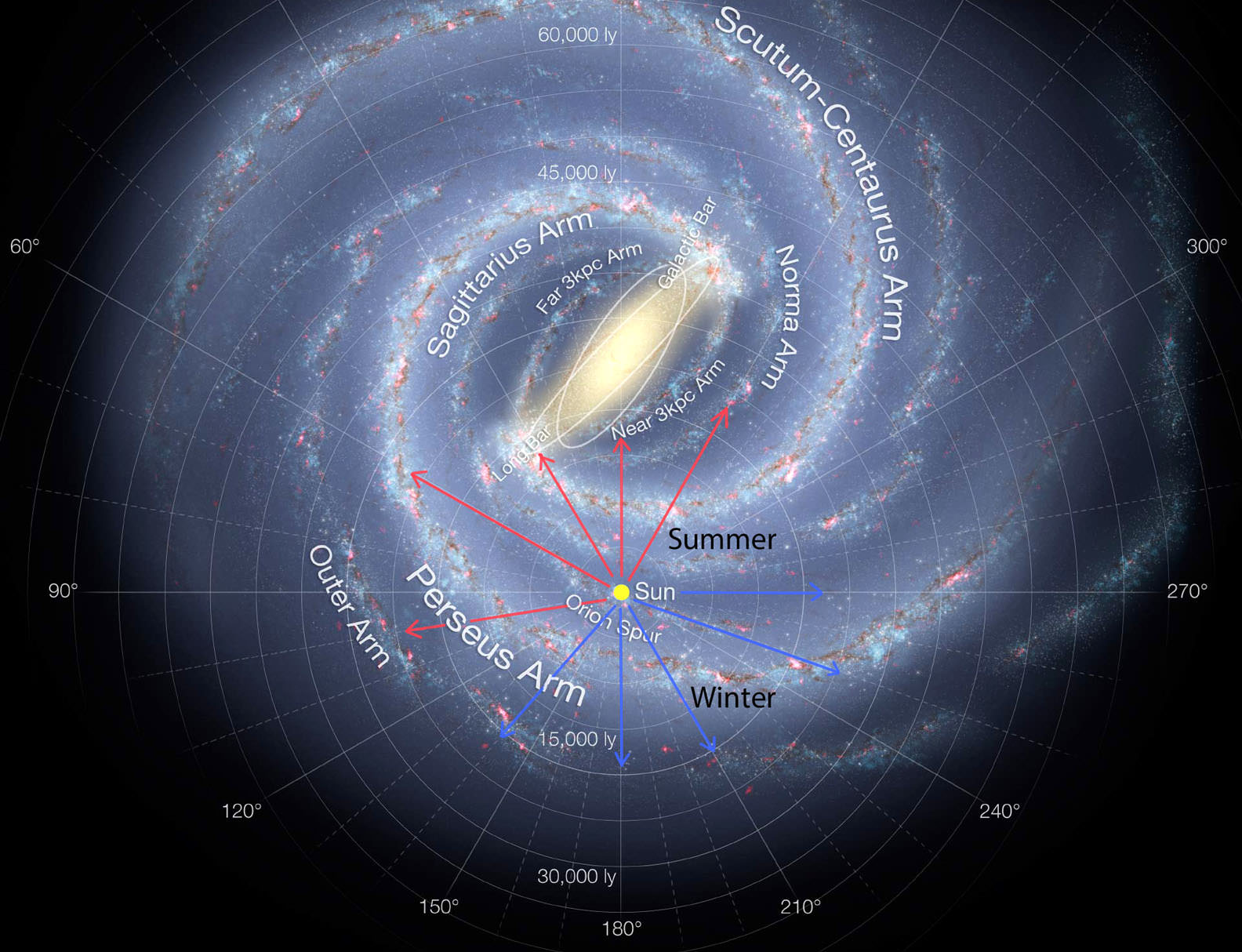
The Milky Way Galaxy is an immense and very interesting place. Not only does it measure some 120,000–180,000 light-years in diameter, it is home to planet Earth, the birthplace of humanity. Our Solar System resides roughly 27,000 light-years away from the Galactic Center, on the inner edge of one of the spiral-shaped concentrations of gas and dust particles called the Orion Arm.
But within these facts about the Milky Way lie some additional tidbits of information, all of which are sure to impress and inspire. Here are ten such facts, listed in no particular order:
1. It’s Warped:
For starters, the Milky Way is a disk about 120,000 light years across with a central bulge that has a diameter of 12,000 light years (see the Guide to Space article for more information). The disk is far from perfectly flat though, as can be seen in the picture below. In fact, it is warped in shape, a fact which astronomers attribute to the our galaxy’s two neighbors -the Large and Small Magellanic clouds.
These two dwarf galaxies — which are part of our “Local Group” of galaxies and may be orbiting the Milky Way — are believed to have been pulling on the dark matter in our galaxy like in a game of galactic tug-of-war. The tugging creates a sort of oscillating frequency that pulls on the galaxy’s hydrogen gas, of which the Milky Way has lots of (for more information, check out How the Milky Way got its Warp).
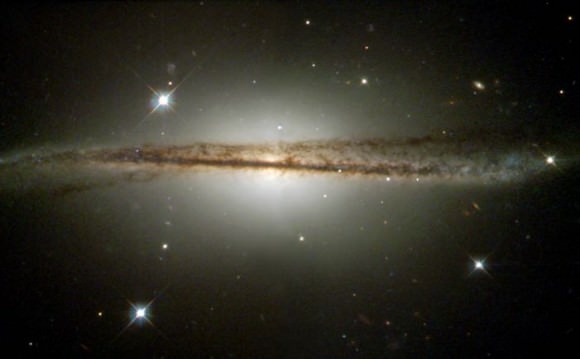
2. It Has a Halo, but You Can’t Directly See It:
Scientists believe that 90% of our galaxy’s mass consists of dark matter, which gives it a mysterious halo. That means that all of the “luminous matter” – i.e. that which we can see with the naked eye or a telescopes – makes up less than 10% of the mass of the Milky Way. Its halo is not the conventional glowing sort we tend to think of when picturing angels or observing comets.
In this case, the halo is actually invisible, but its existence has been demonstrated by running simulations of how the Milky Way would appear without this invisible mass, and how fast the stars inside our galaxy’s disk orbit the center.
The heavier the galaxy, the faster they should be orbiting. If one were to assume that the galaxy is made up only of matter that we can see, then the rotation rate would be significantly less than what we observe. Hence, the rest of that mass must be made up of an elusive, invisible mass – aka. “dark matter” – or matter that only interacts gravitationally with “normal matter”.
To see some images of the probable distribution and density of dark matter in our galaxy, check out The Via Lactea Project.
3. It has Over 200 Billion Stars:
As galaxies go, the Milky Way is a middleweight. The largest galaxy we know of, which is designated IC 1101, has over 100 trillion stars, and other large galaxies can have as many as a trillion. Dwarf galaxies such as the aforementioned Large Magellanic Cloud have about 10 billion stars. The Milky Way has between 100-400 billion stars; but when you look up into the night sky, the most you can see from any one point on the globe is about 2,500. This number is not fixed, however, because the Milky Way is constantly losing stars through supernovae, and producing new ones all the time (about seven per year).
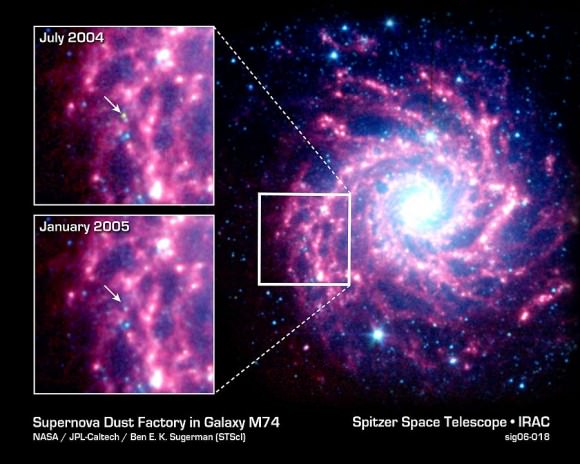
4. It’s Really Dusty and Gassy:
Though it may not look like it to the casual observer, the Milky Way is full of dust and gas. This matter makes up a whopping 10-15% of the luminous/visible matter in our galaxy, with the remainder being the stars. Our galaxy is roughly 100,000 light years across, and we can only see about 6,000 light years into the disk in the visible spectrum. Still, when light pollution is not significant, the dusty ring of the Milky Way can be discerned in the night sky.
The thickness of the dust deflects visible light (as is explained here) but infrared light can pass through the dust, which makes infrared telescopes like the Spitzer Space Telescope extremely valuable tools in mapping and studying the galaxy. Spitzer can peer through the dust to give us extraordinarily clear views of what is going on at the heart of the galaxy and in star-forming regions.
5. It was Made From Other Galaxies:
The Milky Way wasn’t always as it is today – a beautiful, warped spiral. It became its current size and shape by eating up other galaxies, and is still doing so today. In fact, the Canis Major Dwarf Galaxy is the closest galaxy to the Milky Way because its stars are currently being added to the Milky Way’s disk. And our galaxy has consumed others in its long history, such as the Sagittarius Dwarf Galaxy.
6. Every Picture You’ve Seen of the Milky Way Isn’t It:
Currently, we can’t take a picture of the Milky Way from above. This is due to the fact that we are inside the galactic disk, about 26,000 light years from the galactic center. It would be like trying to take a picture of your own house from the inside. This means that any of the beautiful pictures you’ve ever seen of a spiral galaxy that is supposedly the Milky Way is either a picture of another spiral galaxy, or the rendering of a talented artist.
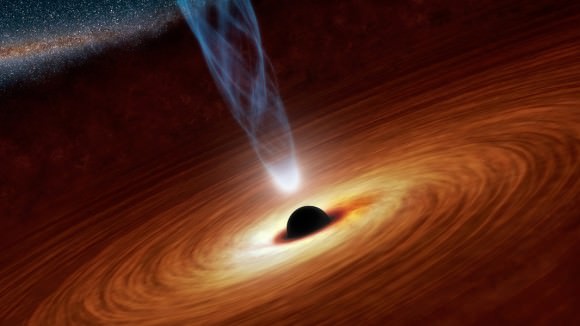
Imaging the Milky Way from above is a long, long way off. However, this doesn’t mean that we can’t take breathtaking images of the Milky Way from our vantage point!
7. There is a Black Hole at the Center:
Most larger galaxies have a supermassive black hole (SMBH) at the center, and the Milky Way is no exception. The center of our galaxy is called Sagittarius A*, a massive source of radio waves that is believed to be a black hole that measures 22,5 million kilometers (14 million miles) across – about the size of Mercury’s orbit. But this is just the black hole itself.
All of the mass trying to get into the black hole – called the accretion disk – forms a disk that has 4.6 million times the mass of our Sun and would fit inside the orbit of the Earth. Though like other black holes, Sgr A* tries to consume anything that happens to be nearby, star formation has been detected near this behemoth astronomical phenomenon.
8. It’s Almost as Old as the Universe Itself:
The most recent estimates place the age of the Universe at about 13.7 billion years. Our Milky Way has been around for about 13.6 billion of those years, give or take another 800 million. The oldest stars in our the Milky Way are found in globular clusters, and the age of our galaxy is determined by measuring the age of these stars, and then extrapolating the age of what preceded them.
Though some of the constituents of the Milky Way have been around for a long time, the disk and bulge themselves didn’t form until about 10-12 billion years ago. And that bulge may have formed earlier than the rest of the galaxy.
9. It’s Part of the Virgo Supercluster:
As big as it is, the Milky Way is part of an even larger galactic structures. Our closest neighbors include the Large and Small Magellanic Clouds, and the Andromeda Galaxy – the closest spiral galaxy to the Milky Way. Along with some 50 other galaxies, the Milky Way and its immediate surroundings make up a cluster known as the Local Group.

And yet, this is still just a small fraction of our stellar neighborhood. Farther out, we find that the Milky Way is part of an even larger grouping of galaxies known as the Virgo Supercluster. Superclusters are groupings of galaxies on very large scales that measure in the hundreds of millions of light years in diameter. In between these superclusters are large stretches of open space where intrepid explorers or space probes would encounter very little in the way of galaxies or matter.
In the case of the Virgo Supercluster, at least 100 galaxy groups and clusters are located within it massive 33 megaparsec (110 million light-year) diameter. And a 2014 study indicates that the Virgo Supercluster is only a lobe of a greater supercluster, Laniakea, which is centered on the Great Attractor.
10. It’s on the move:
The Milky Way, along with everything else in the Universe, is moving through space. The Earth moves around the Sun, the Sun around the Milky Way, and the Milky Way as part of the Local Group, which is moving relative to the Cosmic Microwave Background (CMB) radiation – the radiation left over from the Big Bang.
The CMB is a convenient reference point to use when determining the velocity of things in the universe. Relative to the CMB, the Local Group is calculated to be moving at a speed of about 600 km/s, which works out to about 2.2 million km/h. Such speeds stagger the mind and squash any notions of moving fast within our humble, terrestrial frame of reference!
We have written many interesting articles about the Milky Way for Universe Today. Here’s 10 Interesting Facts about the Milky Way, How Big is the Milky Way?, What is the Closest Galaxy to the Milky Way?, and How Many Stars Are There in the Milky Way?
For many more facts about the Milky Way, visit the Guide to Space, listen to the Astronomy Cast episode on the Milky Way, or visit the Students for the Exploration and Development of Space at seds.org.
How Giant Galaxies Bind The Milky Way’s Neighborhood With Gravity
Is it stretching it too far to think of a Lord of the Rings-esque “Entmoot” when reading the phrase “Council of Giants”? In this case, however, it’s not trees gathering in a circle, but galaxies.
A new map of the galactic neighborhood shows how the Milky Way may be restricted by a bunch of galaxies surrounding and constricting us with gravity.
“All bright galaxies within 20 million light years, including us, are organized in a ‘Local Sheet’ 34-million light years across and only 1.5 million light years thick,” stated Marshall McCall of York University in Canada, who is the sole author of a paper on the subject.
“The Milky Way and Andromeda are encircled by twelve large galaxies arranged in a ring about 24-million light years across. This ‘Council of Giants’ stands in gravitational judgment of the Local Group by restricting its range of influence.”
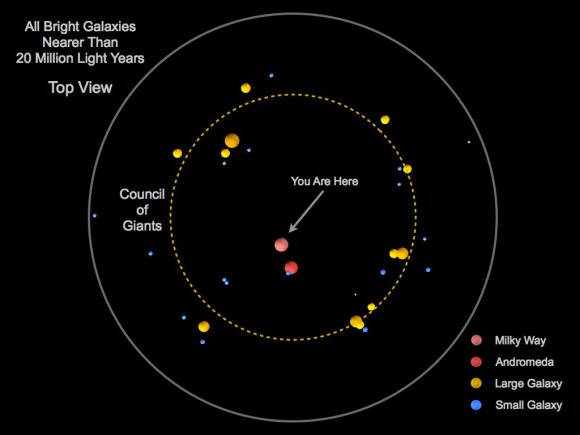
Here’s why McCall thinks this is the case. Most of the Local Sheet galaxies (the Milky Way, Andromeda, and 10 more of the 14 galaxies) are flattened spiral galaxies with stars still forming. The other other two galaxies are elliptical galaxies where star-forming ceased long ago, and of note, this pair lie on opposite sides of the “Council.”
“Winds expelled in the earliest phases of their development might have shepherded gas towards the Local Group, thereby helping to build the disks of the Milky Way and Andromeda,” the Royal Astronomical Society stated. The spin in this group of galaxies, it added, is unusually aligned, which could have occurred due to the influence of the Milky Way and Andromeda “when the universe was smaller.”
The larger implication is the Local Sheet and Council likely came to be in “a pre-existing sheet-like foundation composed primarily of dark matter”, or a mysterious substance that is not measurable by conventional instruments but detectable on how it influences other objects. McCall stated that on a small scale, this could help us understand more about how the universe is constructed.
You can read the study in the Monthly Notices of the Royal Astronomical Society.
Source: Royal Astronomical Society




